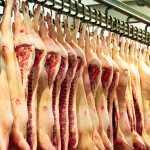
New bee health product receives federal approval
Hops provide the key ingredient for a new bee immunity tool approved for beekeeper use in Canada

Kiwi startup promises methane vaccine for cattle
New Zealand company in running for investment in emission-reducing treatment for livestock

Anthrax found in Saskatchewan cattle
Lab results have confirmed that cattle in northwestern Saskatchewan died of anthrax.

Is supply management shielding Canada’s poultry and egg farmers from bird flu?
Supply managment experts say Canadian system encourages smaller farms, and that helps limit spread of highly pathogenic avian influenza; U.S. industry disagrees

New Bayer genetics to open up soybean herbicide tolerance
Vyconic trait set offers tolerance to five herbicides and will be integrated with the company’s soybean varieties in coming years

Canadian farm groups say manage U.S. tariffs first
Manage Trump's tariffs first and then talk retaliation if necessary, say agriculture organizations

U.S. pork begs for tariff exemption from Canada
The Canadian pork sector, meanwhile, says U.S. tariffs against Canadian pork creates similar damage to the highly integrated North American pork market

Farmland valuation in Ontario may have ‘approached their maximum,’ says report

Pork producers slated for $567M in case of African swine fever
African swine fever hasn’t been found in Canada or the U.S. yet; Canadian government says funds will support hog farmers if a case causes markets to close


